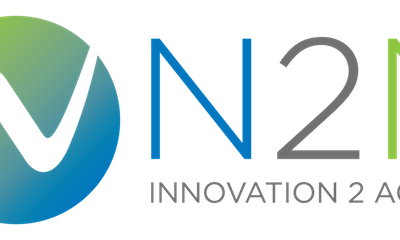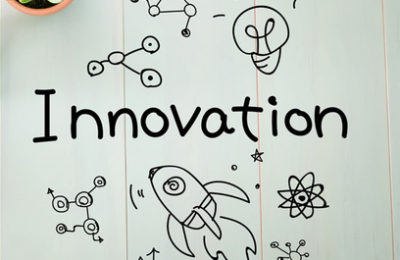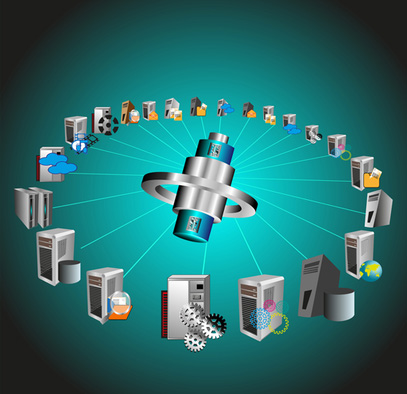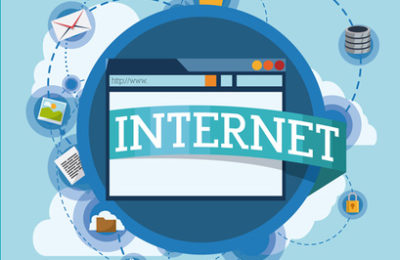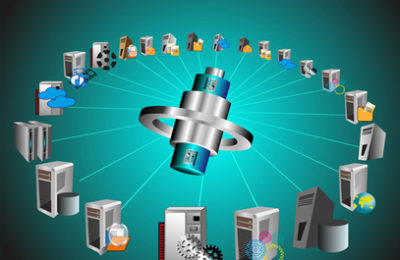EnlightenEd
Get the IT You Deserve with Illuminate

In a recent article in the Harvard Business Review, Joe Peppard argues that executives get the IT they deserve. Peppard compares the relative ease and simplicity of digital services in these executives personal lives to the complicated nature of digital services in the corporate world.
This is because in the corporate world, there is a good chance that every software application is going to have to work in sync with several others. Information has to be shared across platforms and systems if there you are going to have a successful IT department. Peppard uses the analogy of traveling to a different city to see a band. For each portion of your trip, flight, hotel, and concert ticket, you would have to enter your personal information and credit card information separately. The systems don’t share your information, and so you’re forced to complete the same forms multiple times.
“Operating this way today is a big no-no in the corporate world. Imagine if your company?s internal applications couldn’t share data and processes carrying out similar functions or tasks, had different interfaces and screen layouts, and required different passwords. Just think of the inefficiencies and opportunities for errors,” Peppard writes.
It’s true. If you can’t share information securely, you’re going to have an incredibly frustrating and inefficient system that limits what you and your users can accomplish. In an environment with many different systems processing sensitive data, such as a college, it’s imperative that that data is shared in a simple and secure manner.
At N2N, we understand the need for safe and seamless data transfers between software applications and systems. That’s why we’ve created an integration platform as a service (iPaaS) software suite, the Illuminate platform, which is designed specifically for the world of higher education. A college or university has a myriad of applications and systems that students and faculty access every day. Keeping all of these applications working together and sharing data flawlessly is a huge task, but one made easy with Illuminate.
The designers of the Illuminate platform understand that there is no one-size-fits-all fix for integrating the diverse set of applications that exist on every college campus today. Illuminate takes the applications and systems that fit a college’s specific needs and integrates them via on central hub: the Enterprise Service Bus.
The Enterprise Service Bus is an architecture that allows many different applications to run together as part of one infrastructure. It integrates these applications, manages access to them, and presents them in one interface. With Illuminate, students can check grades, view financial aid status, and perform other previously time-consuming tasks right from their mobile device. On your end, Illuminate’s cloud-based format helps keep costs low and provides you with the ability to analyze data more efficiently, leaving you with the resources you need to make good decisions about business and your students’ educations.
If you think your college could benefit from the Illuminate platform and our team of dedicated professionals, contact N2N Integration today.
More EnlightenEd Entries
EnlightenEd
The Technology Behind a Flipped Classroom

The traditional method of teaching and learning at colleges and universities has long been the lecture. And there?s nothing inherently wrong with the lecture format. Students come to class to listen and take notes on the lecture given by a professor. But the lecture hall format has come under fire in recent years because of the lack of student and professor interaction. While the lecture remains a great way for a professor to provide students with a wealth of information in a relatively short time, an increasing amount of college faculty are trying what?s known as a flipped classroom.
In a flipped classroom, students are required to watch lecture videos and use online forums outside of the classroom, and then come to class ready to engage in more advanced topics and project-based learning. Flipped classrooms have been gaining traction lately, in part because professors report that they see an increase in student engagement and student learning. It makes sense if you think about it. Students are expected to learn the basics on their own, using their own devices and technology. Then they come to class to discuss what they?ve learned and handle problems that may have arisen.
In theory, a flipped classroom engages the students in a way that a packed lecture hall just doesn?t allow. However, as with all education techniques, there have been speed bumps for faculty to overcome. Too much emphasis on the work outside of class gives students little reason to come to class, especially if they don?t encounter problems. Faculty have to design a new curriculum that encourages both sides of the work?coming to class and work at home. Another problem is that most high schools simply don?t use the flipped classroom technique, and students come to college lacking the skills and self-discipline required to complete the work assigned outside the classroom.
But why is the flipped classroom seeing so much of a surge in recent years? The answer is that the technology at colleges and universities has become incredibly user friendly. Combined with incoming students? familiarity with high-tech devices, this means professors can assign video lectures and other online work knowing that their students will be able to access and learn from them without problems. Today?s students are comfortable sitting on their couch and accessing the same information that used to only come from attendance at a lecture hall. This means the classroom experience needs to change, as well. If students can access a lecture on their laptop, then there needs to be something new and engaging awaiting them in the classroom.
New software and applications provide faculty with increasingly innovative ways of reaching their students with the information they need to succeed in the classroom. At N2N, we understand that the need for applications and systems on a college campus is always growing and evolving. That?s why we?ve designed the?Illuminate platform to be the revolutionary system and application integration tool that your college needs. Contact N2N Services today for more information.
More EnlightenEd Entries
EnlightenEd
Top IT Issues for 2016

Educause recently published their Research Snapshot, Top 10 IT Issues 2016. We?d like to give you N2N?s perspective on some of these important issues, and our thoughts on how our Illuminate platform can help institutions address these areas.
- First on the list is Information Security. This is a perennial concern, and is an area that has consistently, and justifiably, been a top issue for IT leaders. Concern is needed, as our interconnected world opens many avenues for malfeasance. N2N?s Illuminate platform can be an asset here, as one of its core value propositions is to make it easier for users to manage data interconnections between applications. Having a central platform with controls for data exchange and logging of transactions helps users understand where and to whom data is moving.
- Educause states that technology leaders must work with academic leadership and faculty to Optimize Educational Technology. That is certainly true, and especially so in today?s fast-moving world where an institution?s perceived competitiveness can be tied to its ability to seamlessly integrate its administrative and academic technologies. N2N?s Illuminate platform has out-of-the-box adapters for many popular ed-tech (educational technology) applications, and also creates application programming interfaces to institutional data that can be leveraged by in-house developers.
- Student Success Technologies are critical to improve educational outcomes. Leveraging technology means sharing data, and unfortunately, much institutional data is stuck in its own silo, and each time it needs to be provided to a new, innovative application, a customized interface must be written and maintained. N2N?s Illuminate addresses this by leveraging its core Enterprise Service Bus technology to convert a complex web of interconnections and a ?one-to-one? integration philosophy to a ?one-to-many? paradigm, helping an institution to be nimble in its use of changing tools.
- Enterprise Application Integrations (#8)?are a key to efficient and effective institutional operations, and are the core value proposition of the N2N Illuminate platform. The Illuminate platform?s ready-to-use adapters for common educational enterprise applications makes it easy to connect legacy systems to its Enterprise Service Bus (ESB). This ?one-to-many? connectivity model allows technical staff to focus on areas where they add unique value to their organization rather than continually building and maintaining a mesh of ?one-off? connections.
More EnlightenEd Entries
EnlightenEd
Why Unified Communications Is Right For Your Campus

It’s been a long time since we relied solely on phone calls and voicemail for communication. We’ve since grown into email, instant messages, conferencing, and video calls. Now there are more ways to get ahold of each other than there ever have been, and it takes certain technological know-how for an employee to juggle all these communications and respond appropriately. And if it’s a hassle for an end user to manage all their communications, then you can bet it isn’t easy for an IT department to deal with these systems in an simple and secure manner.
It may seem like a tough call to make, but unified communications are becoming a necessity for higher education institutions that want to encourage a culture of collaboration and innovation. Video conferencing is increasingly becoming a popular option, especially for schools with satellite campuses that are located miles away.
Imagine a situation when a voice call couldn’t quite communicate the concept at hand. Now imagine an easy solution, as the call switches to video and a visual demonstration allows the person on the other end to fully grasp the concept being presented. This really isn’t a radical idea, and it shouldn’t be a surprise that unified communications are improving collaboration and decision-making at campuses across the country. Voicemails can be accessed from email, documents can be shared remotely, and students can watch a lecture from a campus in another state.
This all sounds fantastic, but how do you integrate a diverse set of applications and systems, and truly unify your communications? At N2N, we’ve created the Illuminate Platform, a strategic and adaptable combination of technologies, starting with a flexible, reliable and secure cloud infrastructure platform. Rather than trying to find that one solution that does everything, the Illuminate platform was designed with the understanding that there is no one system that will address all institutional needs.
Illuminate gives you seamless and secure data transfer across all systems, even legacy and strategic programs that still run locally. It works as a central hub, linking everything together and taking data and transforming it into the format that another application needs. Illuminate is like a highway leading between several cities, bypassing the system of existing roads, ensuring smooth data transactions across applications.
At N2N, we pride ourselves on our educational background and expertise. Higher education institutions are not businesses that can be run like any other corporation. Of course, there are business elements to running a college or university, but at N2N we understand that higher education is about more than business, and we pride ourselves on being able to find solutions that integrate both business and academic applications. That way you can focus on providing your students with the best education possible, instead of your IT structure.
If you would like to know more about how our team and the N2N Illuminate platform can help your college or university, contact N2N Services today.
More EnlightenEd Entries
EnlightenEd
What is an Enterprise Service Bus?

If you?ve been looking for all-in-one software solutions to streamline operations at your school, you might have encountered the term ?Enterprise Service Bus? (or ?ESB?).
We know that there are a lot of acronyms and potentially confusing terms out there when it comes to technology, and ESB is one of them. So, we thought we?d walk you through what exactly an Enterprise Service Bus is, what purpose it serves, and how it can make a huge difference for your college or university.
The definition of an Enterprise Service Bus (ESB)
In the simplest terms, an Enterprise Service Bus is an architecture that allows many different applications to run together as a part of one infrastructure. It integrates these different applications, manages the access to them, and presents them to the user in a single interface. An ESB is typically part of an integration suite and can offer many valuable tools that other frameworks do not.
To make this abstract concept a bit easier to understand, think about the word ?bus? for a second. In the tech world, it refers to a transmission path where signals are dropped off and picked up ? kind of like an actual bus! So, you can think of the Enterprise Service Bus as a ?bus? through which all of your institution’s information passes.
The ESB?s Purpose in the N2N Integration Cloud (NIC)
An ESB is a core component of the N2N Integration Cloud (NIC) because it serves as the architecture that allows the NIC to integrate all of a school?s applications in one central hub. It actually provides the interface that allows you to connect your institution’s applications together ? parametrizable with no coding by you required!
Why This Matters For Your College or University
While you can probably immediately think of some benefits of the application integration offered by the NIC, there are a few that might not be so obvious. Here are some ways the NIC can help your college:
- It allows your students to use their mobile phones to check grades, view financial aid status, and more (NIC for Mobile).
- It cuts down on manual labor needs by eliminating tedious data entry tasks.
- It helps keep costs low (the NIC is cloud-based and does not require you to purchase extra hardware).
- It provides you with the ability to analyze data more effectively (melding data from multiple applications). That way, you have the resources you need to make good business decisions and give each student a personalized educational experience.
The NIC was specifically designed with higher education in mind, so you can feel confident knowing that it can help you achieve your goals. It?s also quick to deploy, so you can start benefitting from its functionality right away.
So, there you have it ? an explanation of what an Enterprise Service Bus is and why it is an important part of the NIC. If you have questions or are interested in learning more about how the NIC can help your college or university, we?d love to chat ? contact us today!
More EnlightenEd Entries
EnlightenEd
So, What Exactly is iPaaS?
When cloud computing burst onto the scene, it took a while for businesses to see the possibilities. What exactly was this new technology? Was it safe? Was it practical? Was it cost-effective?
As people began to use and understand the cloud, they saw that the answer to all their questions was a resounding yes, that using cloud applications was no different from using locally installed applications. The cloud allowed businesses to easily store and access data and applications using any device, without having to deal with expensive hardware purchases. This boosted productivity and efficiency, while driving down costs.
Here at N2N Services, we give schools access to all the benefits of the cloud via our N2N Integration Cloud.
But that?s not all that NIC does.
Evolving technology allows us to view cloud-based systems as consolidated platforms rather than single applications. This has led us to the concept of the iPaaS (Integration Platform as a Service.?). And that?s exactly what the N2N Integration Cloud is.
Organizations use iPaaS as a central hub to integrate every single one of the applications they use ? whether cloud-based or on-premise.
So for example, if an institution has a legacy system in place on-premises, and also uses a few cloud-based SaaS applications from different companies – and needs the flexibility to add even more applications in future ? iPaaS creates a single, simple platform through which data can pass between any and all of those systems. But even better, iPaaS acts as a translator for each application, fully integrating all of them so that communication between them is seamless.
This is what NIC does for schools.
Using iPaaS means there is no hardware to install in many cases, except as may be required for some types of system connections. It means that there is no on-premises middleware to manage and support between applications or between school and system. Our “concierge approach,” leveraging the iPaaS means we provide application integration as a service, with no lengthy training required for implementation. It simply and elegantly integrates all application data into one central system.
One ?dashboard in the NIC allows administrators to view and monitor transactions that pass through the system?to ensure that information input into any one application will instantly be shared with all other participating applications as well, so that all systems are always up-to-date and coordinated.
All this sharing and communication does not, however, translate into less data security. On the contrary, an iPaaS allows for central management and monitoring of data transfers, helping to ensure compliance with all regulations.
What it does translate into is the ability to reallocate human resources to tasks more important than simple data transactions, or as we like to say, “transaction herding.” No longer will employees need to update several different systems with new data, or search through several different applications to find information. iPaaS automates those tedious tasks, freeing up resources for other projects.
The N2N Integration Cloud is an iPaaS offering designed specifically for educational institutions. We here at N2N Services understand the unique needs of educational institutions, and have created a system that applies the latest in enterprise technology to the world of higher education. Contact us today for more information on how the N2N Integration Cloud works, and how it can benefit your school, your faculty and staff, and your students.
More EnlightenEd Entries







